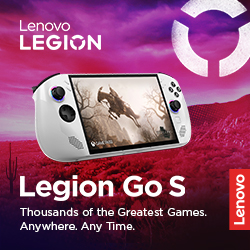Riot Games is diving deeper into the world of Trading Card Games (TCG) with Project K, a new addition to the League of Legends universe. Led by Chengran Chai as Executive Producer and Dave Guskin as Game Director, both of whom bring a wealth of experience in the TCG space, this game promises to deliver a fresh take on card gaming. Guskin, notably, was the former Executive Producer of Legends of Runeterra, Riot’s acclaimed digital card game, adding extra credibility to the project’s ambitions.
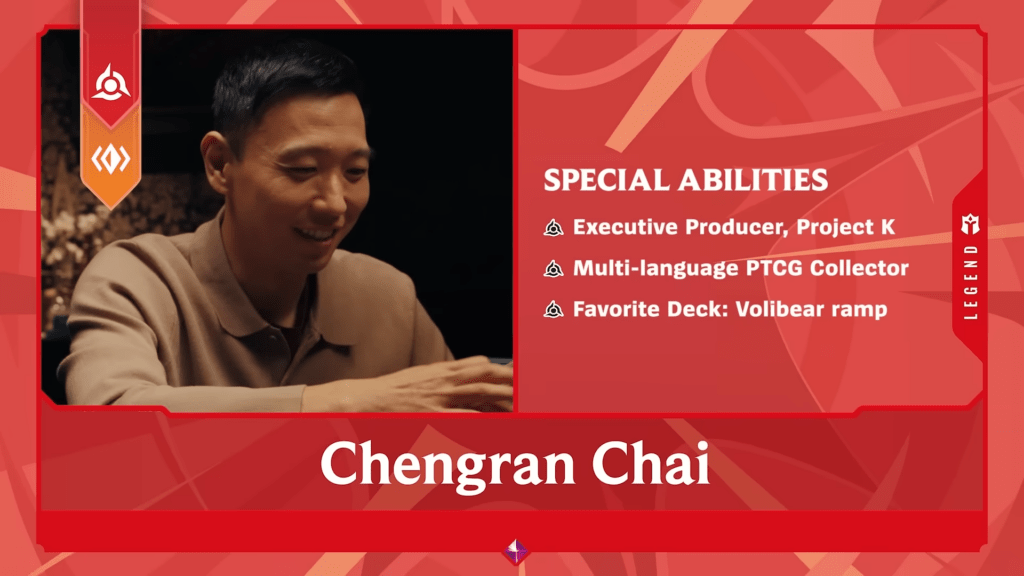
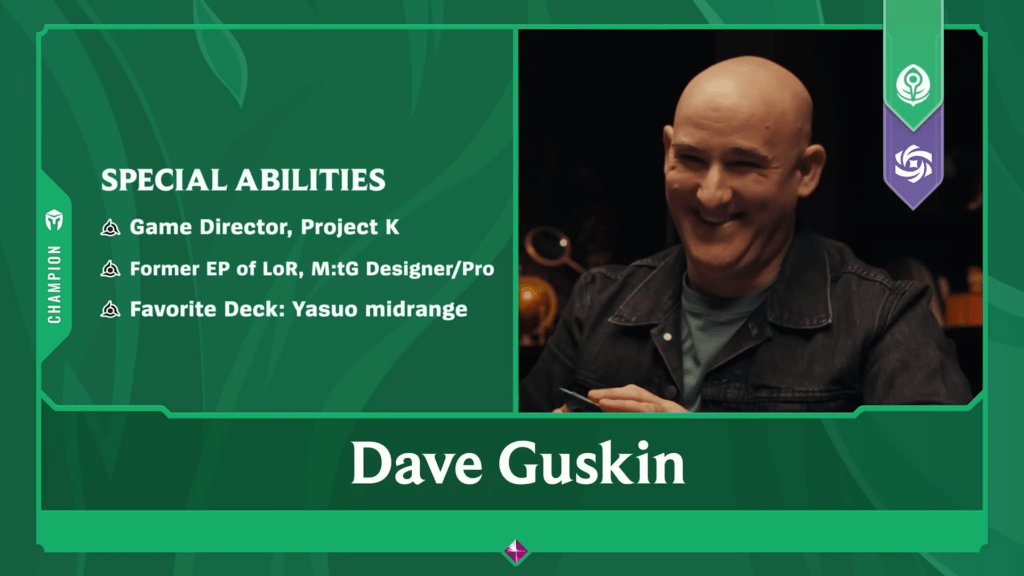
With only a 4-minute introduction trailer released so far, we’ve pieced together some exciting details and speculated about what’s to come. Here’s everything we know—and what we can guess—about Project K.
The Win Condition: Points Over Life

Unlike conventional TCGs, where the objective is to reduce an opponent’s life total to zero, Project K seems to revolve around accumulating points. At the end of the trailer, we hear a developer exclaim, “And I place her here exhausted, and I get 8 points!” This hints at a more objective-based gameplay system where completing certain actions or objectives rewards points, which are likely the key to victory.
Gameplay

With the information from the trailer, we believe the gameplay loop of Project K works as follows:
- Battlefield Reveal: At the start of a match, multiple Battlefield cards are revealed. These cards are likely chosen from a pool based on both players’ collections.
- Resource Draw: At the beginning of each turn, both players draw one card from their Resource Deck.
- Priority System: The player going first can either play a card or pass priority to the opponent, similar to the system in Legends of Runeterra.
- Deploy Units and Champions: When Champion or Unit cards are played, they are deployed to the Base. These cards can be exhausted (tapped) to attack or occupy specific Battlefields. Their Might value contributes toward conquering that Battlefield.
- Turn Progression: Players alternate playing cards or passing priority until both players pass consecutively, ending the turn.
- Battlefield Resolution: At the end of the turn, whoever has the highest Might value on a Battlefield conquers it and earns one point.
- Post-Battle Effects: Champions and Units that participated in the Battlefield are discarded or return to Base.
- Next Turn Begins: The game continues with the next turn/round, repeating this cycle until a player reaches the required points to win.
This streamlined and objective-focused loop is designed to keep the game dynamic and engaging.
The Battlefield

Central to Project K’s gameplay are Battlefield cards. An overhead shot from the trailer shows three Battlefield cards at the center of the table, contested by players. These cards, such as Zaun Warrens, include keywords like “Conquer,” suggesting that controlling these locations awards points.
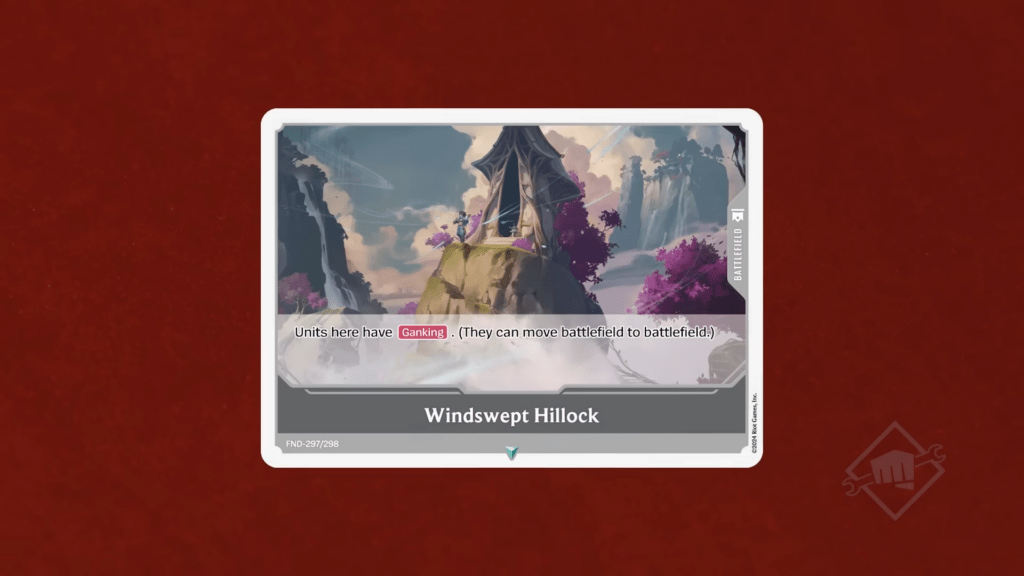
Battlefields also introduce strategic depth. For example, the Windswept Hillock Battlefield indicates that units stationed on one Battlefield cannot move to another unless they have the “Ganking” keyword, making unit placement critical.
Conquering Battlefields
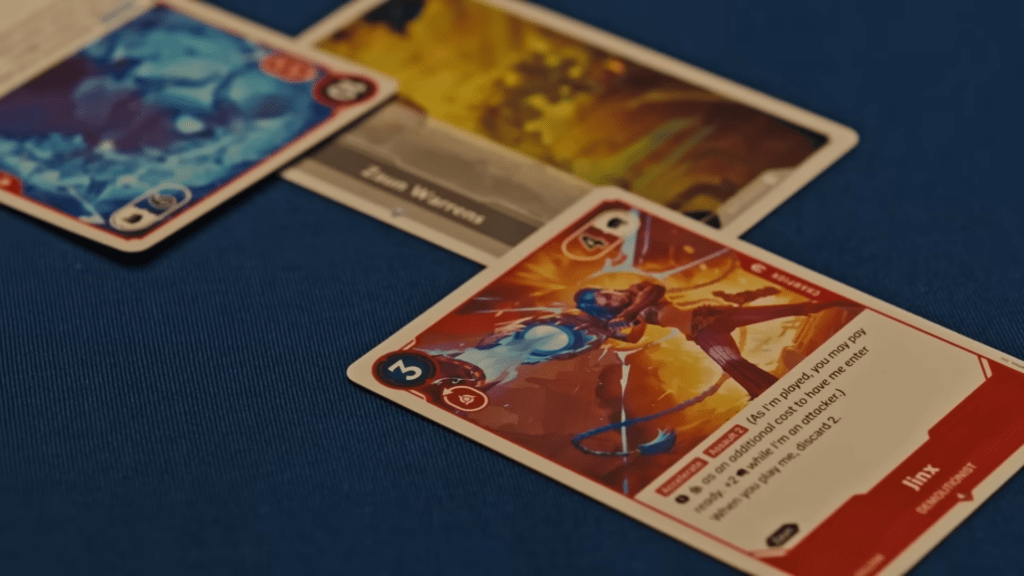
So, how does one “conquer” a Battlefield? The trailer reveals four primary card types: Legend, Champion, Spell, and Battlefield. A fifth type, Unit, was briefly glimpsed and appears to act as supplementary minions that help players dominate Battlefields.
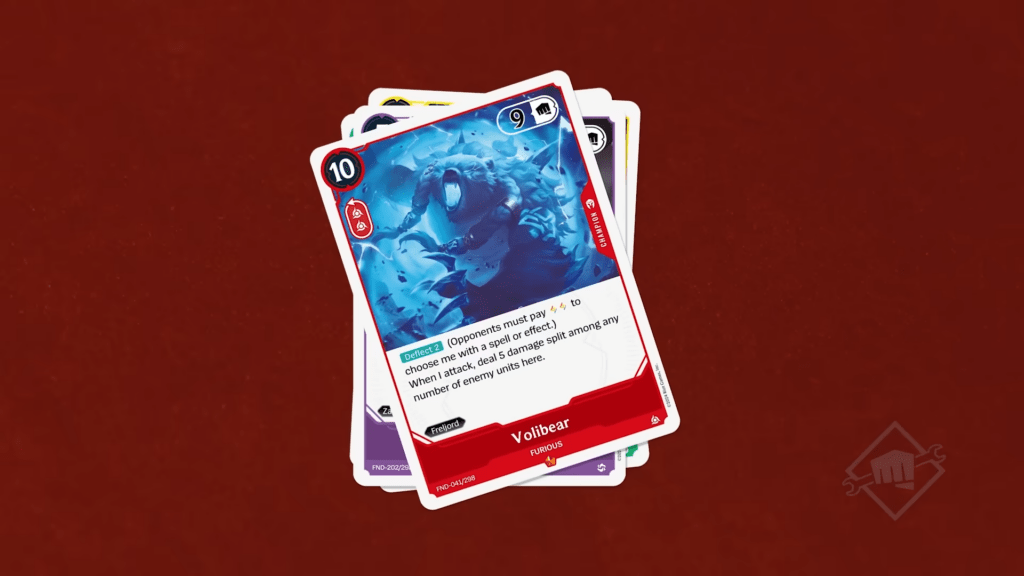
Interestingly, Champion and Unit cards do not have life or health values. Instead, they are defined by their Might, a stat likely determining who controls a Battlefield. For example, if a player’s total Might on a Battlefield exceeds their opponent’s at the end of a turn, they may claim it for points. Abilities like Yasuo’s Champion card, which deals damage equal to its Might, could further reduce an opponent’s total Might, adding another layer of tactical play.
Deckbuilding and Restrictions

Project K employs a unique deckbuilding system with three distinct decks:
- Main Deck (likely 40 cards)
- Resource Deck (likely 10 cards)
- Points Deck, which tracks accumulated points (possibly 8 cards).
Decks are built around a Legend, each tied to two of four revealed colors: Fury (Red), Calm (Green), Chaos (Purple), and Orange. Players can only include Spells and Units that share colors with their Legend, while dual-colored cards likely require compatibility with both colors. This system ensures that deckbuilding is both thematic and strategically flexible. Based on the Trailer, the maximum hand size is likely capped at ten cards.
Card Anatomy

Each card features several key components:
- Cost (top-left): The resources required to play it.
- Specific Resource Cost: The symbol below the main cost specifies additional requirements.
- Might (top-right): Likely determines control of Battlefields.
- Abilities and Keywords: Define the card’s functionality.
- Affiliation and Sub-type: Potentially enable synergies with other cards.
Deck Archetypes

Traditional deck archetypes will likely make their way into Project K. Based on the trailer, archetypes include:
- Aggro: Jinx-focused decks.
- Tempo: Jinx or Yasuo.
- Midrange: Yasuo.
- Ramp: Volibear.
- Combo/Token: Viktor.
It’s also likely that Control and other archetypes will find representation as the card pool expands.
Multiplayer and Organized Play
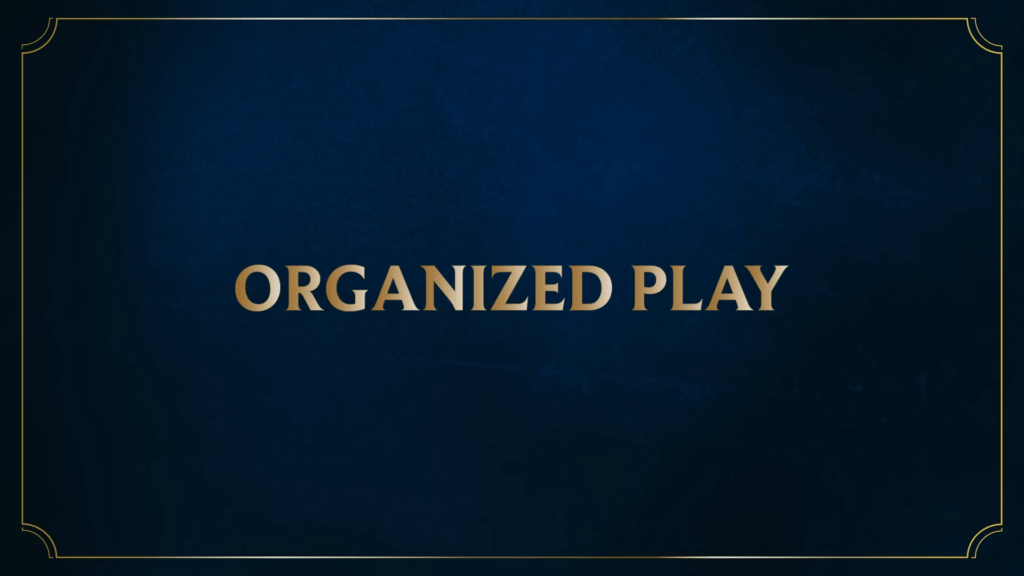
While Project K will focus on 1v1 matches, it is also designed for multiplayer, with the developers promising one of the best multiplayer TCG experiences. For Organized Play, Riot plans to prioritize local-level events, such as in-store tournaments and National competitions, before scaling to international events. This approach ensures a grassroots foundation for a healthy competitive scene.
Release Plans
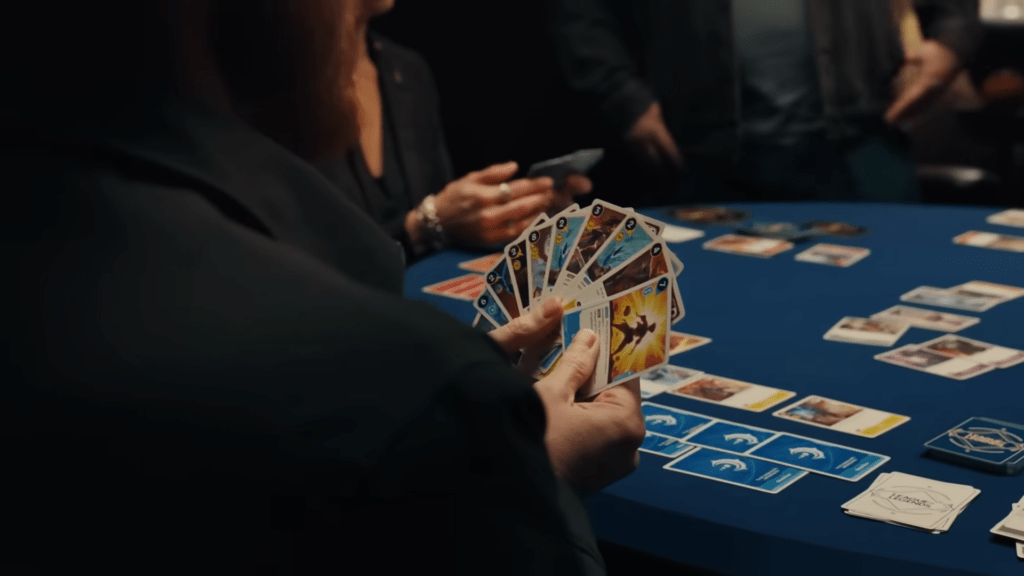
Project K is set to debut in China in early 2025, with a staggered global release throughout the year. This rollout strategy aims to provide players worldwide with a smooth launch experience, ensuring sufficient card supply and well-organized play environments.
Our Excitement for Project K

Project K is shaping up to be a groundbreaking entry into the TCG genre. As long-time fans of both League of Legends and trading card games, we can’t wait to see how Project K evolves and what it brings to the table. The fusion of strategy, lore, and creativity promises an unforgettable experience for players worldwide.
You can check for Project K updates on Riot’s X account.
While we’re all waiting for more info, why not check out our Arcane articles?
Read More:
Arcane S2 Act 3: Amazing Ending or Unfortunate Wrap-up? – VRSUS
Arcane Season 2 Act 2: Initial Thoughts and Review – VRSUS
First Thoughts on Arcane Season 2 Act 1 – VRSUS
Caitlyn and Vi in Arcane: A Complex, Yet Meaningful Love Story – VRSUS




